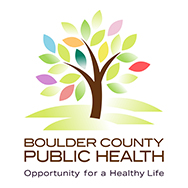Methamphetamine Contamination
Methamphetamine contamination is created when a person smokes meth and can be spread by touching contaminated surfaces. The residue is extremely sticky and can be challenging to clean. The result is that residue builds over time and can show up in places where meth hasn’t even been used but transferred through touch.
Meth Residue on Surfaces
Meth contamination in public spaces, where exposures are typically infrequent and short in duration, does not present significant health risks in most cases, though. Infants and young children are most vulnerable. The places where health risks are higher are generally private residences where meth has been manufactured or used over long periods.
Meth residue does not present significant health risks for most groups. Infants and young children are most vulnerable but less so in relation to episodic exposure in public spaces, where momentary touches present little risk. The places at highest risk are generally private residences where meth has been manufactured or used over long periods.
Information on Exposure to Methamphetamine
Secondary Exposure to Meth-Contaminated Surfaces
Contaminated surfaces, due to someone who has used meth touching the surface or previously airborne residue that has settled, can expose others through dermal absorption due to skin contact with the contaminated area or through ingestion if hands are then put in mouths without cleaning. The probability of such exposure causing someone to experience symptoms is low, especially in relation to exposure in a public setting.
Because meth is metabolized quickly in the body and expelled within a few days, health risks primarily relate to long-term, chronic exposures.
If someone experiences a significant level of exposure to meth, they can become ill. In general, infants, children, the elderly, and people with compromised immune systems are at a higher risk for complications. However, meth exposure can affect healthy adults too.
Symptoms of meth exposure may include:
- Watery, red, and burning eyes, often accompanied by discharge and pain
- Irritation of the mucus membranes, especially in the nose and throat
- Skin irritations, redness, and rashes
- Chest pain and difficulty breathing
- Abdominal pain and diarrhea
- Chronic sneezing, coughing, and congestion
- Adverse effects on the central nervous system
- Moderate or severe headaches
- Dark-colored urine
- Rapid heart rate
- Yellow jaundice
- Fever
- Impairment in mental capabilities
- Hallucinations
Boulder County Main Public Library & Methamphetamine Use


